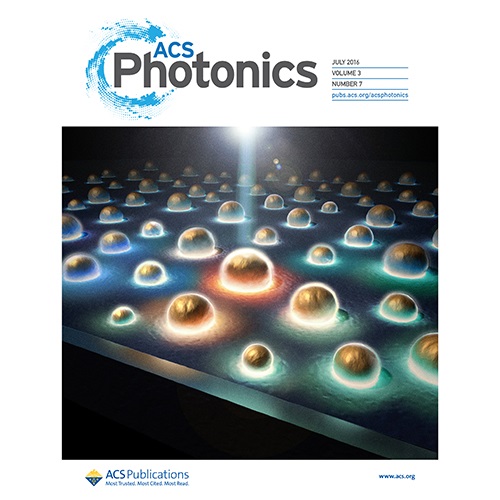17 August 2016
Since early times, metal nanoparticles have been used for coloring glass where colors are produced by light scattering and absorption associated with plasmon resonances of the particles. Nowadays, in many applications it is crucial to create colors in transparent substrates (e.g., glass) and a way of doing it is via surface nanostructuring.
In a recent study published in ACS Photonics, which has had the honor of gracing the cover of the journal’s July 2016 issue, ICFO researchers Rewen Yu, Albert Carrilero, Dhriti S. Ghosh, Rinu A. Maniyara, led by ICREA Professsors at ICFO Javier García de Abajo and Valerio Pruneri, in collaboration with Corning Inc. researchers Nick Borrelli, David Baker and Prantik Mazumder, have demonstrated the use of dewetted metal nanocaps on transparent silica surfaces to produce and customize structural colors.
In their work, the team of scientists has shown for the first time that by changing the contact angle of the nanocaps it is possible to achieve narrow resonances and large tunability compared with traditional approaches such as changing particle size. By doing this, they were able to achieve a vast range of colors covering the visible spectrum and control its color by specifying the film thickness and materials. That is, they were able to accomplish color tuning through interference by simply adding an ultrathin metal film at a designated distance from the dewetted particle array.
The results obtained in this study have demonstrated that these designs and techniques hold great potential for large-scale production of colored and dichroic glass with applications to optical windows, filters, and displays.

An ICFO and Corning study on color customization of transparent silica surfaces makes it to the cover of ACS Photonics.

ACS Photonics July Cover. Image courtesy of Nacho Gaubert.













